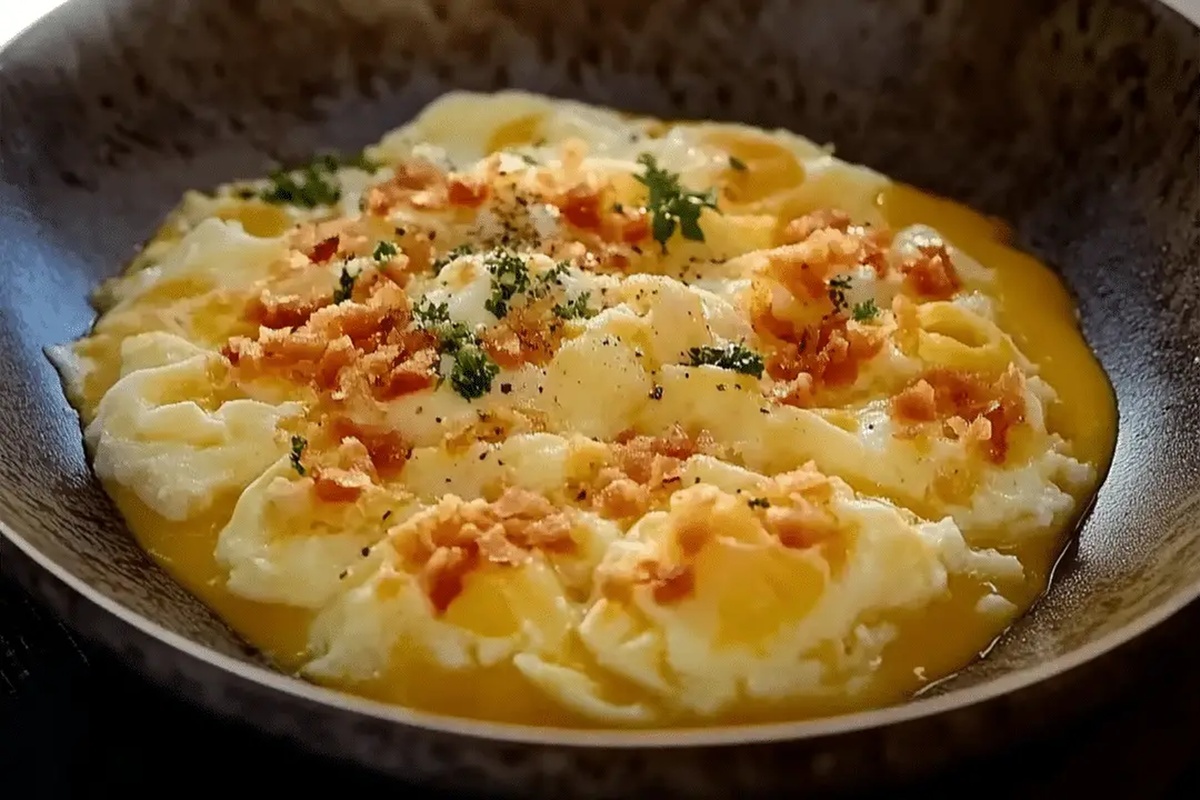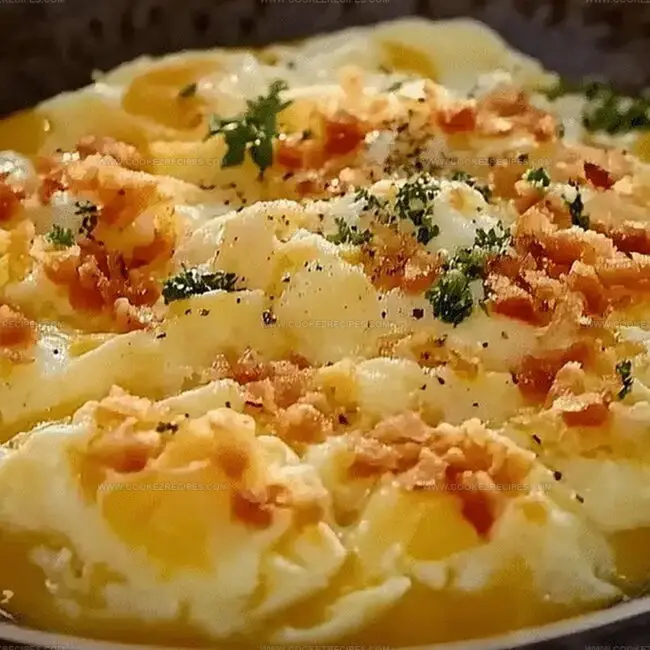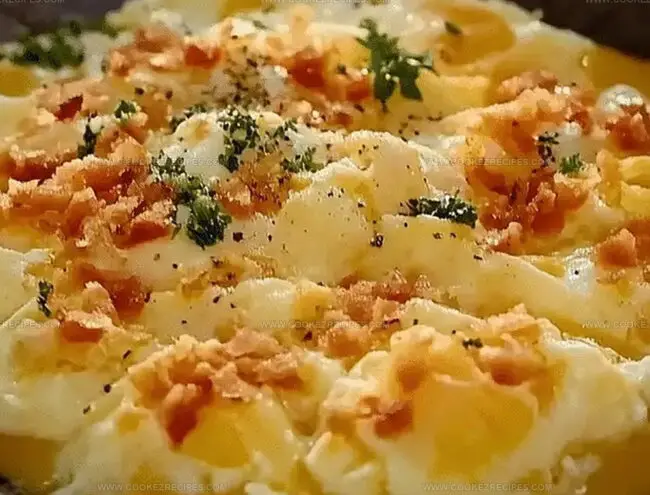Fluffiest Scrambled Eggs Recipe for a Cozy Morning
Culinary magic happens when perfectly whisked scrambled eggs dance in a sizzling pan.
Whispers of butter melt into golden waves of creamy goodness.
Breakfast transforms into a delightful experience that awakens your senses.
Comfort mingles with simplicity in this classic morning ritual.
Protein-packed and incredibly versatile, these eggs promise a satisfying start to your day.
Chefs and home cooks alike know the secret to creating silky, luxurious scrambled eggs.
Each bite promises pure morning bliss that you won’t want to miss.
Scrambled Eggs Done Right For Morning Wins
Classic Scrambled Egg Ingredient List
Main Ingredients:Seasoning:Optional Toppings:Scrambled Eggs Cooking Method
Step 1: Whisk Egg Mixture
Grab fresh eggs and crack them into a mixing bowl.
Add a splash of milk, sprinkle some salt and pepper.
Whisk everything together until the mixture looks light and slightly bubbly, ensuring the yolks and whites blend perfectly.
Step 2: Prepare Cooking Surface
Select a non-stick skillet and place it on medium-low heat.
Add a knob of butter and let it melt completely, tilting the pan to spread the butter evenly across the surface.
Step 3: Create Creamy Eggs
Gently pour the whisked egg mixture into the buttered skillet.
Allow the eggs to sit undisturbed for a few seconds until the edges start to set slightly.
Use a flexible spatula to softly push the eggs from the pan’s edges toward the center.
This technique helps uncooked eggs flow to the edges and create a creamy texture.
Continue folding and stirring the eggs until they reach your preferred consistency – whether you like them soft and silky or more well-done.
Step 4: Plate and Garnish
Transfer the scrambled eggs immediately from the skillet to a warm plate.
Optional toppings include:Serve piping hot alongside crispy toast or your favorite breakfast companions.
Egg Tips For Fluffy Scrambled Goodness
Keep Scrambled Eggs Fresh for Later Bites
Savory Matches For Scrambled Eggs
Savor Sensational Sides: Complementary Pairings for Scrambled Eggs
Light & Fluffy Scrambled Egg Styles
FAQs
Yes, scrambled eggs are nutritious. They’re packed with high-quality protein, vitamins like B12 and D, and minerals such as selenium. They support muscle health and provide essential nutrients for your body.
Absolutely! While milk adds creaminess, you can skip it. Use water or cream instead, or simply whisk eggs with salt and pepper. The key is gentle heat and constant stirring for soft, fluffy eggs.
Cook eggs on medium-low heat and stir gently. Remove from heat when they’re still slightly wet, as they’ll continue cooking from residual heat. Avoid overcooking and use fresh eggs for the best texture.
Use low heat, add a small amount of dairy like milk or butter, and stir constantly. Remove eggs from heat when they’re still slightly runny. This technique ensures a soft, luxurious texture.
Print
SCRAMBLED EGGS Recipe
- Total Time: 10 minutes
- Yield: 2 1x
Description
Silky smooth scrambled eggs elevate breakfast with their creamy, golden perfection. Rich butter and gentle whisking create a luxurious morning treat that will delight your palate.
Ingredients
Main Ingredients:
- 4 large eggs
- 1/4 cup (60 milliliters) milk
Seasoning:
- Salt, to taste
- Pepper, to taste
Cooking Ingredient:
- 1 tablespoon (15 milliliters) butter or cooking spray
Instructions
- Gather essential ingredients and prepare a whisking station with a mixing bowl, ensuring all components are within reach for smooth preparation.
- Delicately crack eggs into the mixing bowl, carefully avoiding shell fragments. Season with salt and pepper, then incorporate milk to enhance creaminess.
- Vigorously whisk the egg mixture until ingredients are thoroughly integrated and the texture transforms into a light, uniform blend with subtle frothiness.
- Select a non-stick skillet and position it on medium-low heat. Allow butter to melt completely, gently rotating the pan to create an even, glossy coating.
- Carefully pour the whisked egg mixture into the heated skillet, allowing the edges to gradually set for approximately 10 seconds without disruption.
- Using a flexible spatula, initiate gentle folding motions from the pan’s perimeter toward the center, enabling uncooked egg portions to redistribute and cook evenly.
- Continue soft, consistent stirring and folding, monitoring the eggs’ transformation from liquid to tender, creamy curds. Adjust heat if necessary to prevent overcooking.
- Once eggs reach desired consistency – whether softly set or more firmly structured – immediately remove the skillet from heat to prevent toughening.
- Transfer the scrambled eggs onto a warm plate, optionally embellishing with fresh herbs, crumbled cheese, or preferred garnishes. Serve promptly alongside complementary breakfast accompaniments.
Notes
- Use room temperature eggs for smoother, more consistent scrambling and prevent temperature shock.
- Opt for low and slow cooking to achieve creamy, soft scrambled eggs without becoming rubbery or overcooked.
- Include a splash of dairy like milk or cream to enhance richness and create a softer texture during whisking.
- Avoid over-stirring while cooking to maintain larger, more delicate egg curds and prevent breaking them into tiny pieces.
- Prep Time: 5 minutes
- Cook Time: 5 minutes
- Category: Breakfast
- Method: Sautéing
- Cuisine: American
Nutrition
- Serving Size: 2
- Calories: 260
- Sugar: 1g
- Sodium: 200mg
- Fat: 20g
- Saturated Fat: 8g
- Unsaturated Fat: 10g
- Trans Fat: 0g
- Carbohydrates: 2g
- Fiber: 0g
- Protein: 14g
- Cholesterol: 370mg




Daniel Bruns
Founder & Culinary Innovator
Expertise
Recipe development for home cooks, Nutritional analysis and meal planning, Culinary education and food writing
Education
Auguste Escoffier School of Culinary Arts
Diploma in Culinary Arts and Operations
Focus: Classical and contemporary cooking techniques, Culinary entrepreneurship and kitchen management, Menu development and food cost analysis
Daniel’s story started with flour on his face and a pie in the oven at his grandma’s house. He later sharpened his skills at the Auguste Escoffier School of Culinary Arts.
His goal? Recipes so simple you’ll want to cook every night. When he’s not whipping up one-pan wonders, Daniel’s outside picking herbs, hosting neighborhood cook-offs, or baking chocolate cakes with his kids, messy, sweet, and unforgettable.